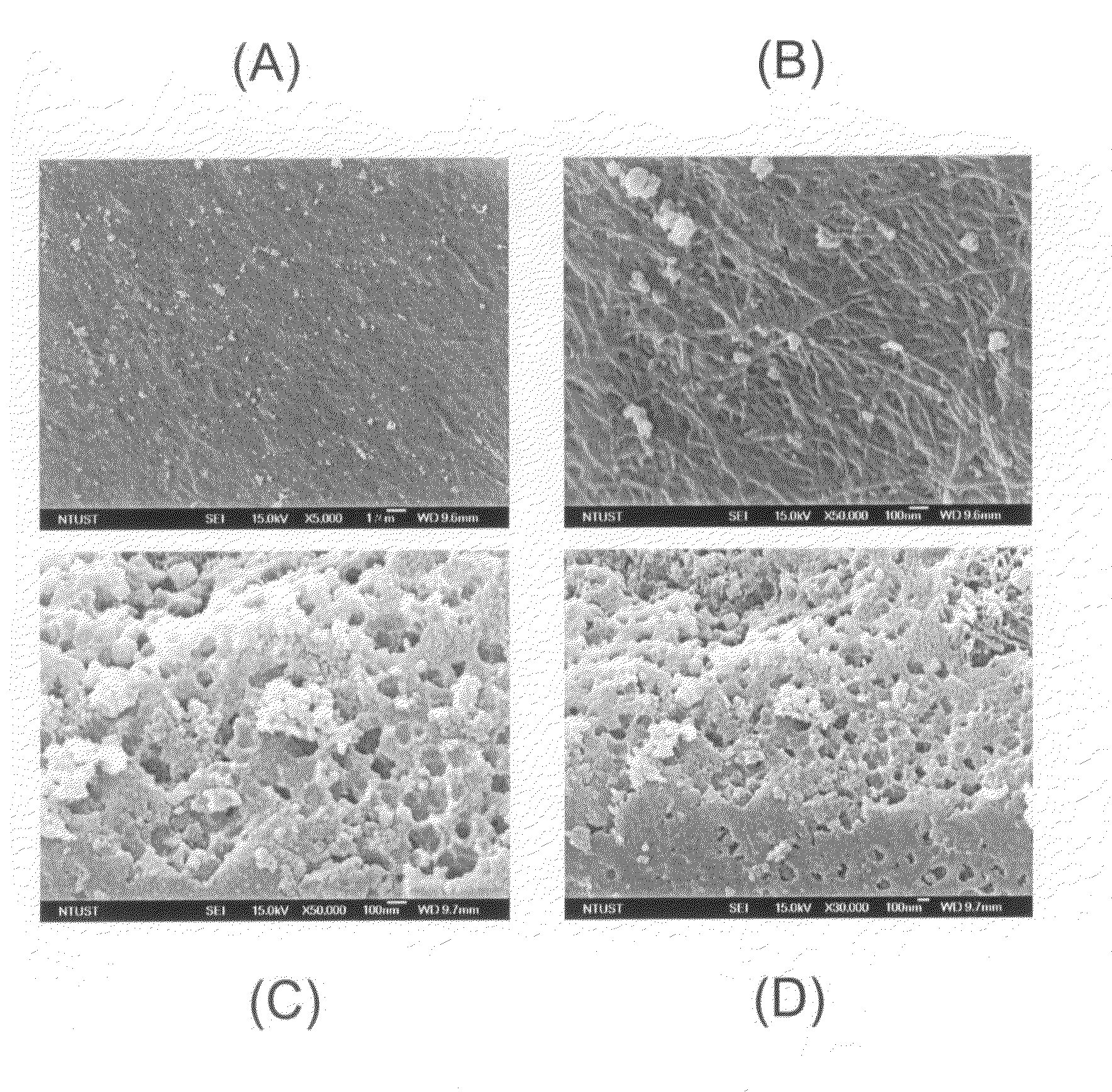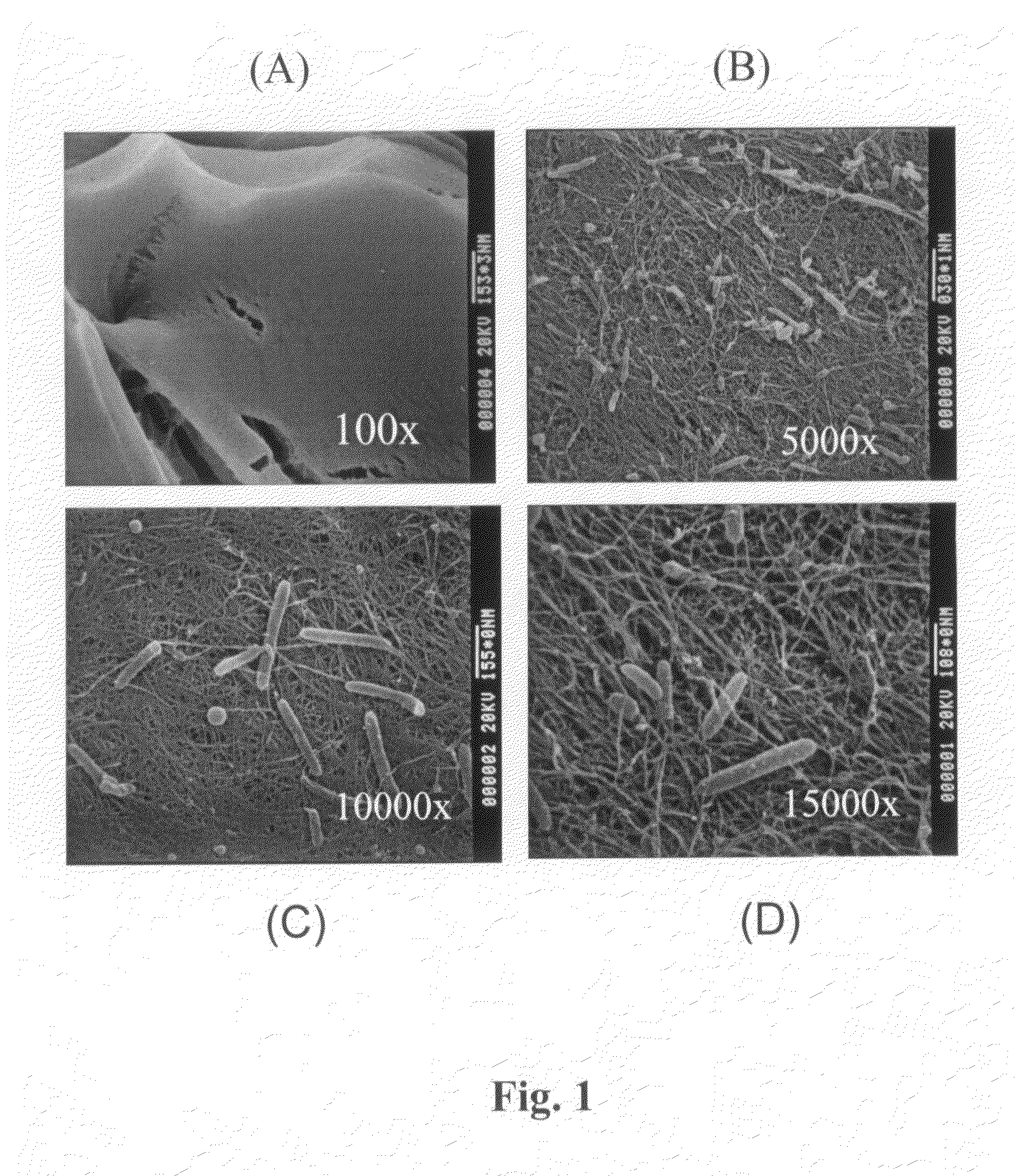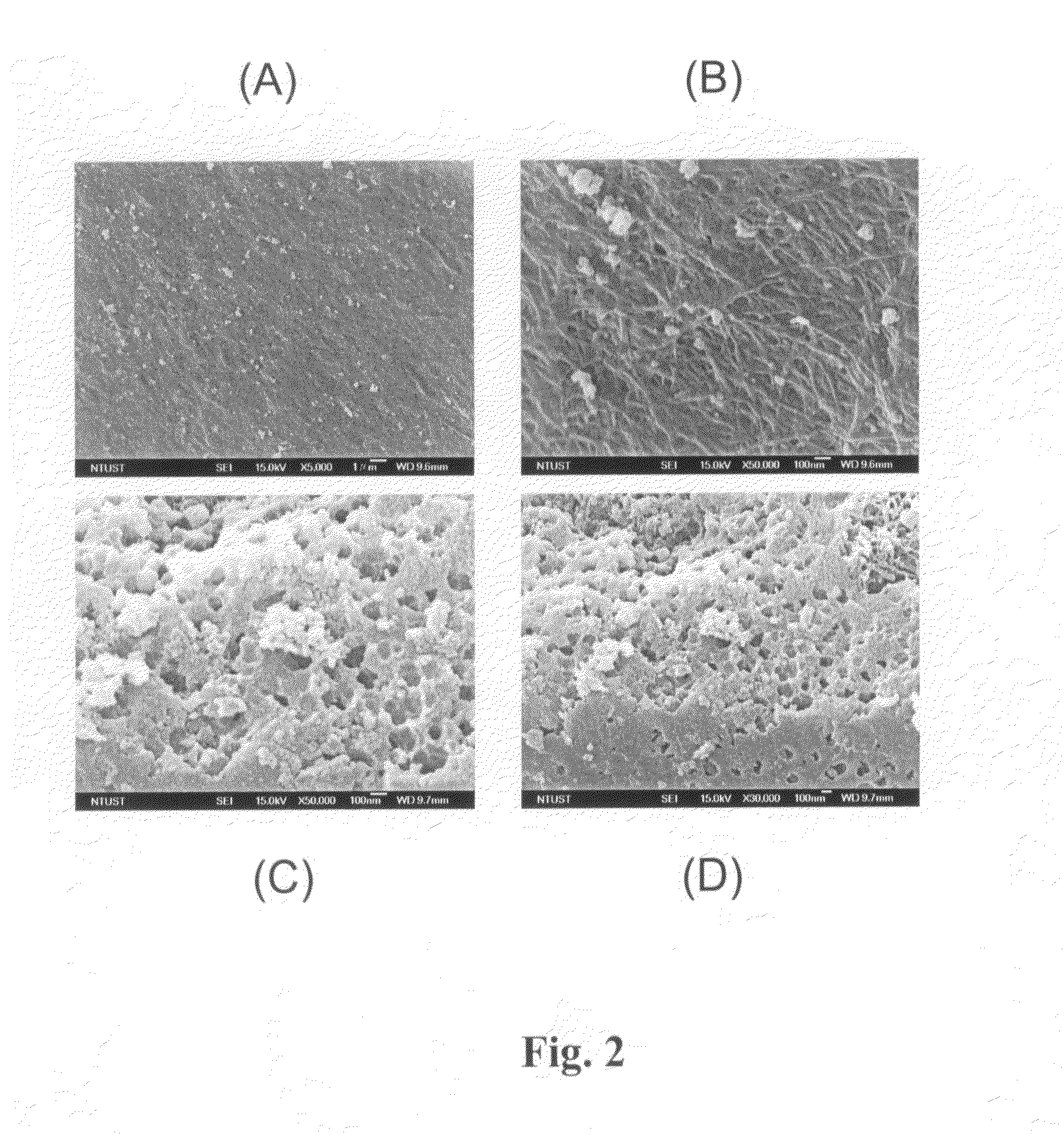Bacterial cellulose film and carbon nanotubes-like thin film structures developed from bacterial cellulose
a technology of bacterial cellulose and carbon nanotubes, which is applied in the direction of non-metal conductors, cell components, conductors, etc., can solve the problems of difficult operation, high manufacturing cost, and inability to apply cnt development in commercial applications,
- Summary
- Abstract
- Description
- Claims
- Application Information
AI Technical Summary
Benefits of technology
Problems solved by technology
Method used
Image
Examples
example 1
Equipments and Materials
Equipments
[0072]1. X-ray diffraction: Rigaku Dmax-B, Japan
[0073]2. Scanning electron microscope: JEOL JSM-6500F FESEM
[0074]3. Energy—Dispersive X-ray Analysis: JSM6500
[0075]4. Synchrotron radiation source, National Synchrotron Radiation Research Center at Hsinchu, Taiwan, (NSRRC)
[0076]5. Field Emission Scanning Electron Microscope (FE-SEM)
[0077]6. Raman spectrometry: Dilar XY model, argon ion laser (wavelength 514.5 nm) 20 mW
[0078]7. Thermogravimetric Analyzer (TGA): Perkin Elmer TGA-7
[0079]8. Eight-channel battery cells tester: Maccor
[0080]9. Programmable Speedy High Temperature Furnace: homemade
[0081]10. Coin battery cell assembly: Hosen (2032)
[0082]11. Glovebox workstation: UNIlab MBRAUN
[0083]12. Lithium metal cutter: Xinhe Science and Technology Co., Ltd.
[0084]13. Coin battery cells pressing machine: Haoju Company
[0085]The Bacterial cellulose (nata de coco) used in this study was produced by Gluconacetobacter xylinus subsp. xylinus, whi...
example 2
Methods
High Temperature Carbonization of Nata De Coco
[0086]The nata de coco samples were undergone dehydration treatment. The dehydrated nata de coco samples were placed in a high temperature oven and undergone pyrolysis for about 2 hours at 1000° C. The high temperature oven was infused with N2 gas. The pyrolysis treated nata de coco samples (i.e., BC-CNTs) were undergone scanning electron microscopy (SEM), and transmission electron microscopy (TEM) studies, and tested for electrical conductivity, charge / discharge, and lithium battery simulation.
Sample Preparation for Scanning Electron Microscropy (SEM)
[0087]The decolored and acid-removed nata de coco or BC-CNT samples were cut into about 5 mm×5 mm small squares under an analytic microscope, and soaked in 0.1 M phosphate buffer containing 2% OSO4 fixative at 4° C. overnight. The samples were washed with distilled water twice (each time for about 15 minutes), and underwent dehydration by transferring the samples to 10%, 20%, 30%, 40...
example 3
SEM Observation of Nata De Coco and BC-CNT Samples
[0142]The nata de coco synthesized by Gluconacetobacter xylinus subsp. xylinus was bacterial cellulose (BC), which is a kind of carbohydrate. The primary product of BC was in pale yellow color. After excessive washing, the BC became white color. BC had a smooth texture when it was under visual observation or by touching. However, under SEM, the BC demonstrated the typical fibril-like structure (FIG. 1). When the BC was viewed under higher magnification, the fibrilar structures of the bacterial cellulose and the rod-shaped bacteria could be seen in panels (B), (C), and (D) of FIG. 1.
[0143]When the nata de coco was undergone pyrolysis at 1000° C. for about 2 hours under N2 gas, the sample (BC-CNT) turned into a pure black thin film. However, the degree of the retention of the fibrilar-structure in the pyrolytic nata de coco varied depending upon the degree of dehydration of the nata de coco prior to pyrolysis. As shown in panels (A) an...
PUM
| Property | Measurement | Unit |
|---|---|---|
| Temperature | aaaaa | aaaaa |
| Temperature | aaaaa | aaaaa |
| Temperature | aaaaa | aaaaa |
Abstract
Description
Claims
Application Information
 Login to View More
Login to View More - R&D
- Intellectual Property
- Life Sciences
- Materials
- Tech Scout
- Unparalleled Data Quality
- Higher Quality Content
- 60% Fewer Hallucinations
Browse by: Latest US Patents, China's latest patents, Technical Efficacy Thesaurus, Application Domain, Technology Topic, Popular Technical Reports.
© 2025 PatSnap. All rights reserved.Legal|Privacy policy|Modern Slavery Act Transparency Statement|Sitemap|About US| Contact US: help@patsnap.com



